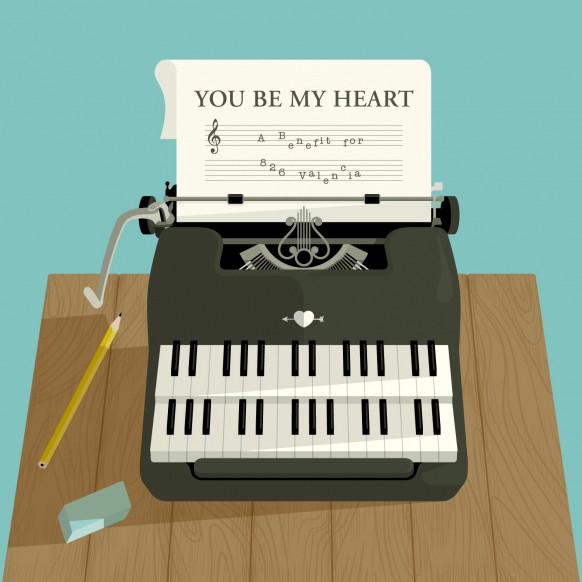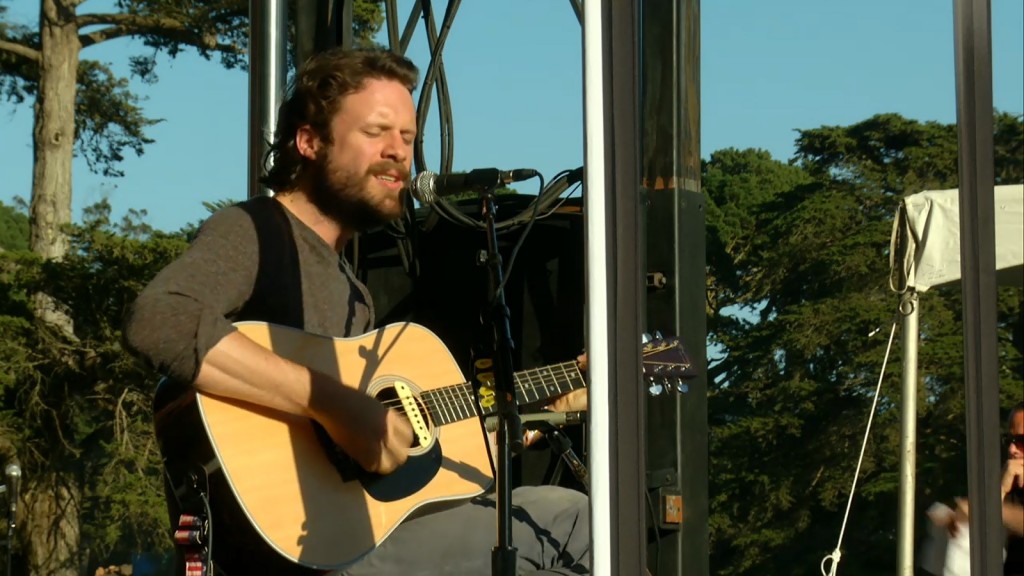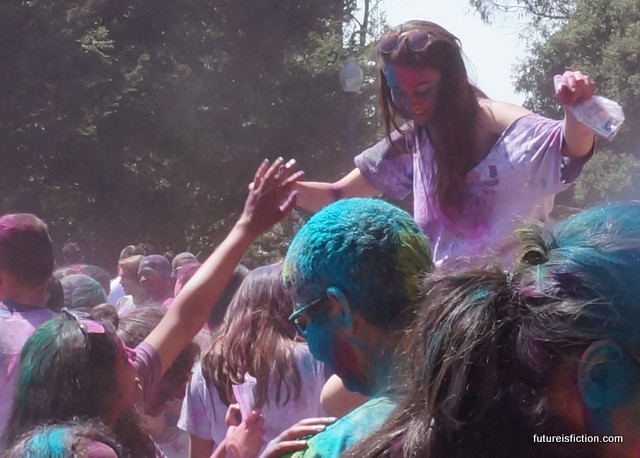 As Spring festivals go, Holi is among the most fun. Forget about the Maypole, during the Indian Holi festival people douse each other with bright colors. It usually takes place during March, but UC Berkeley’s Indian Student Association has their Holi celebration in April.
As Spring festivals go, Holi is among the most fun. Forget about the Maypole, during the Indian Holi festival people douse each other with bright colors. It usually takes place during March, but UC Berkeley’s Indian Student Association has their Holi celebration in April.
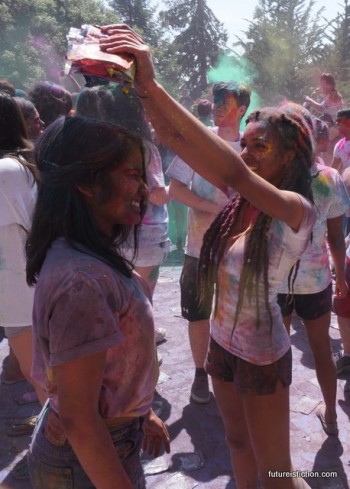 The UC Berkeley Holi festival is a dance party. The DJ mixed house hits with Indian pop music.
The UC Berkeley Holi festival is a dance party. The DJ mixed house hits with Indian pop music.
The event is free, and you can buy color from the Indian Student Association ahead time, or day of, until they run out. Ten packets (500 grams altogether) is sufficient but you could use twice as much so it really depends. Try to hold your colors until you make eye contact with someone. Though it can be tempting to merrily toss color into the air when the bass drops or even to toss a little color on someone’s back if their shirt is looking a little too naked of the stuff in your hand. More than once I gave in to this temptation.
Preparing for Holi
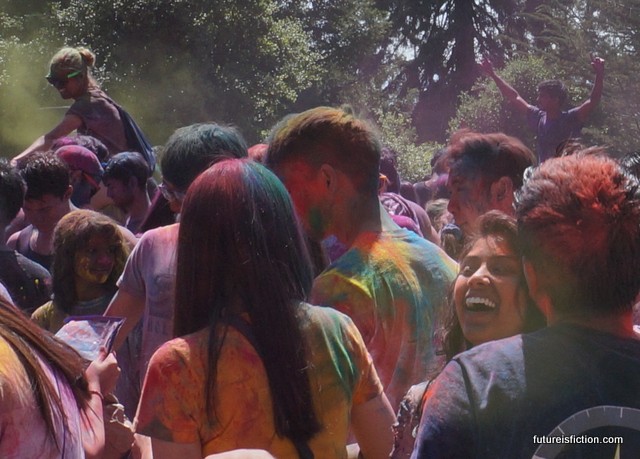 The colored powder is not paint. Some reports say it is made of corn starch, others say rice flour. In any case it comes right off in the wash, or even with a light sweep or pat of the hand. When shopping for colors make sure to get one that is non-toxic and all natural. Trust, you will get it in your mouth or up your nose at some point!
The colored powder is not paint. Some reports say it is made of corn starch, others say rice flour. In any case it comes right off in the wash, or even with a light sweep or pat of the hand. When shopping for colors make sure to get one that is non-toxic and all natural. Trust, you will get it in your mouth or up your nose at some point!
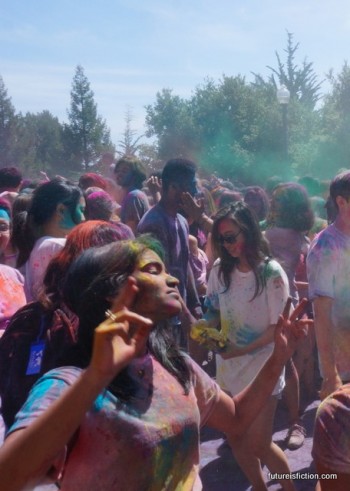 When dressing for Holi try to wear all white, so the colors will stand out on your clothes. In a sea of color splatters, the white spots on clothes stand out, begging to be marked.
When dressing for Holi try to wear all white, so the colors will stand out on your clothes. In a sea of color splatters, the white spots on clothes stand out, begging to be marked.
There are only a handful of parking spots; most of the students walked from campus.
Some people bring squirt guns and water balloons. At UC Berkeley’s Holi most of the water play was in one area, so you could avoid it if you don’t like that aspect.
History of Holi
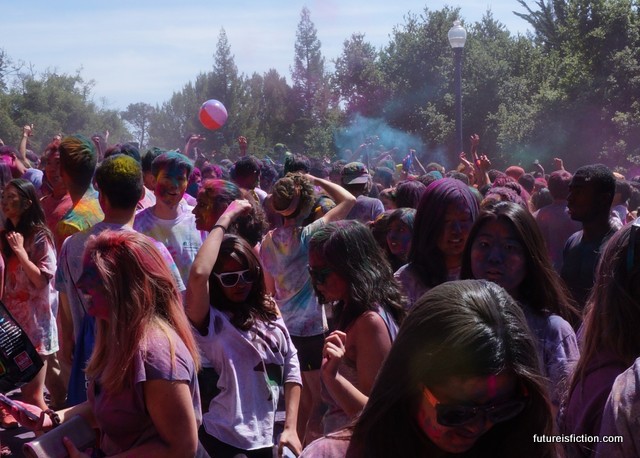 Holi Festival goes back to at least the fourth century. The word “Holi” hails from the demon Holika. The myth goes that Holika pulled a loyal Hindu into a bonfire while wearing her magic, fire-resistant coat. But Vishu saw and magically switched the coat to the loyal fellow, causing Holika to perish instead. Thus the Holi festival is a celebration of good defeating evil, similar to many other Springtime traditions that celebrate survival of winter.
Holi Festival goes back to at least the fourth century. The word “Holi” hails from the demon Holika. The myth goes that Holika pulled a loyal Hindu into a bonfire while wearing her magic, fire-resistant coat. But Vishu saw and magically switched the coat to the loyal fellow, causing Holika to perish instead. Thus the Holi festival is a celebration of good defeating evil, similar to many other Springtime traditions that celebrate survival of winter.
Because of this Holi festivals often have a bonfire. Some say that the tradition of throwing colors comes from putting ash on the face in remembrance of the defeat of Holika.
Holi is the celebration of amnesty and renewal. Old debts are forgiven, others are paid. It is a day of cleansing oneself of regret and staring anew. In this way, though the calendar doesn’t change, it is similar to the American tradition of New Years’ Eve, but a lot more colorful.
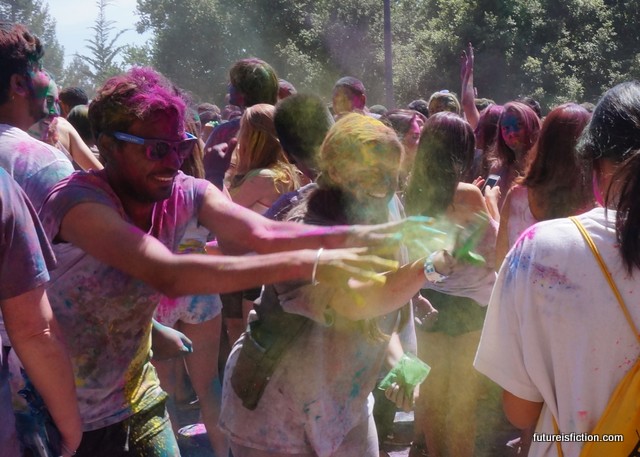
Check out Holi next April and join in the camaraderie. It’s a great way to talk to strangers. You are supposed to throw color on everyone, stranger and friend alike. This is the best part of Holi: walking up to someone you don’t know and having a brightly-colored laugh together.
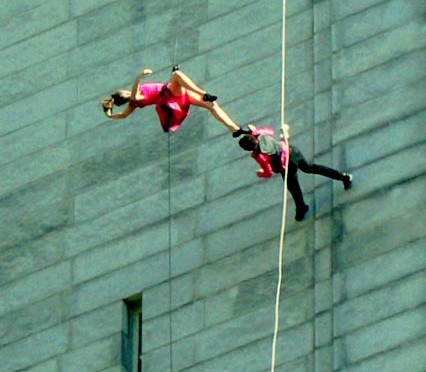

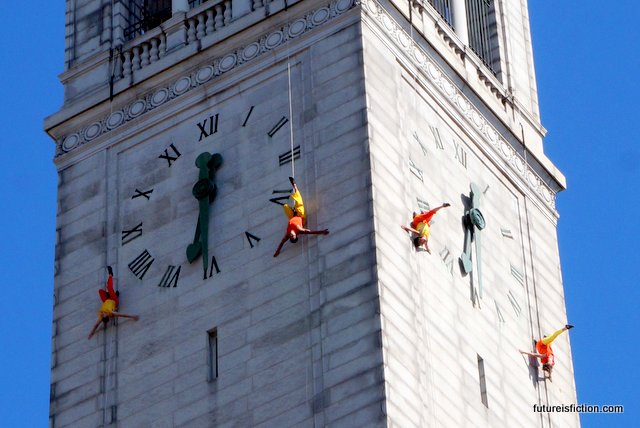











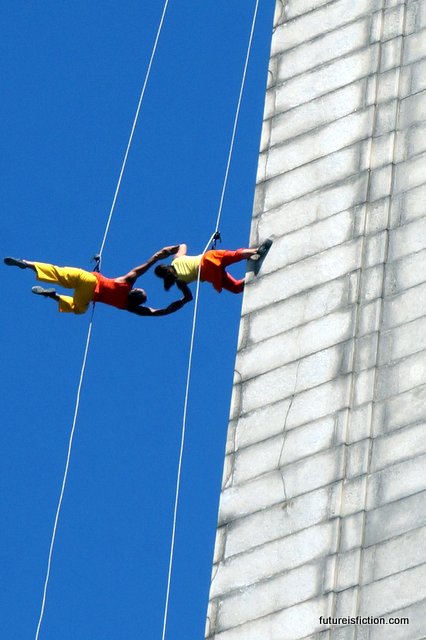 The Berkeley clock tower is not empty.
The Berkeley clock tower is not empty.
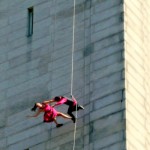



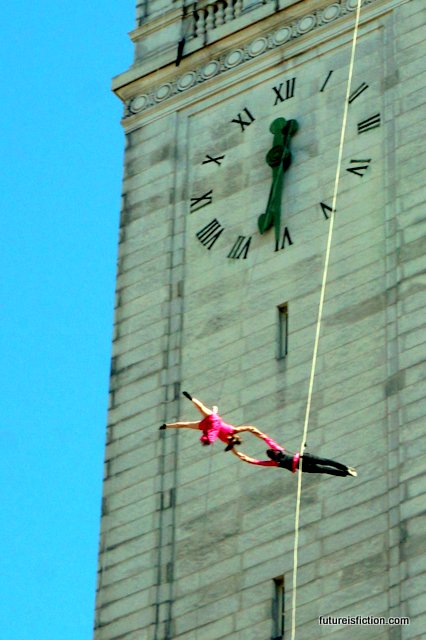

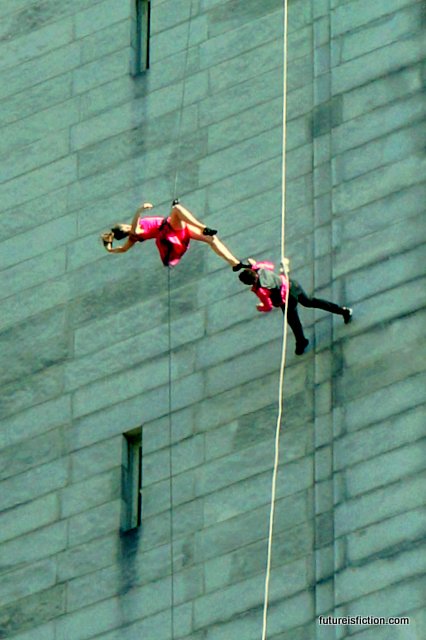
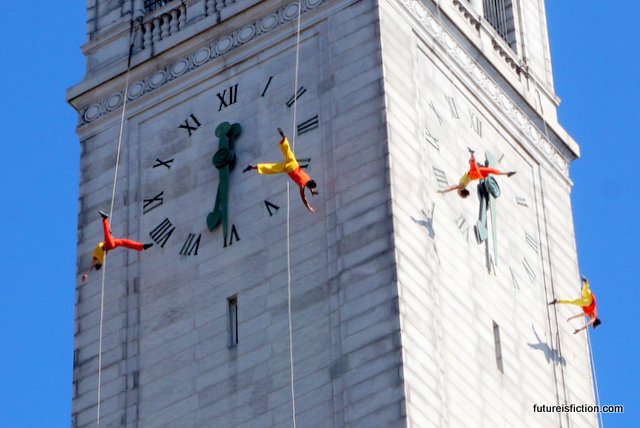


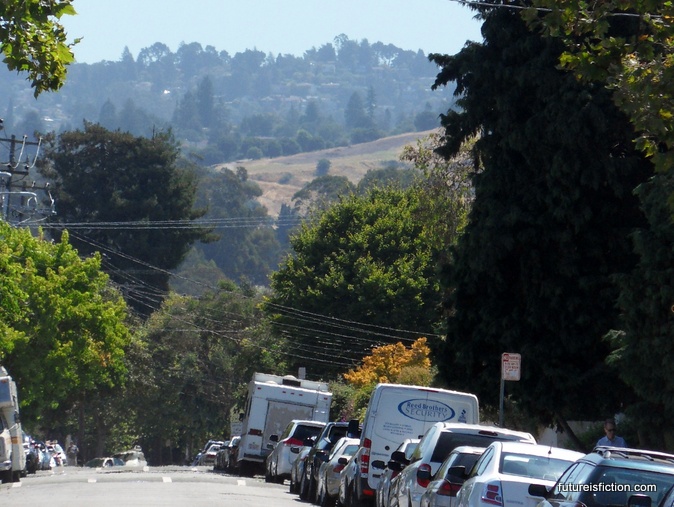


 This photo is from the
This photo is from the 